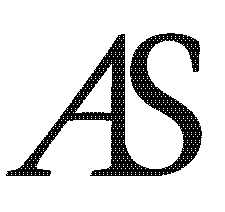How to set the BEST goals for the new year with less work but more impact.
Going into the new year, it is common to get reflective. We start asking some questions of ourselves...
What went well in 2021? What didn't go so well? And perhaps most importantly, how can I make 2022 better?
This leads many to make resolutions—which is not a great idea. (See why here). Others set goals. And while that is better than resolutions, it has it's challenges.
This article is adapted from chapter 7 of my book—The Law of The Vital Few: How to Do More by Doing Less. You can learn more about the book or pick up a copy here.
How Do I Choose The Right Goal?
It’s not always clear what our next focus—our big goal—should be. Our vision is coloured by our emotions and our views are obscured by urgency. Things that produce or carry a heavy emotional charge for us or things that are immediately apparent to us tend to take up more attention than others.
The result is that we may erroneously weigh these things higher when we are trying to decide on what goals to pursue.
That is where my Big Goal System (BGS) comes in. The system not only eliminates the tendency for us to set hasty, ill-advised goals, it also helps us stop spinning our wheels and procrastinating on deciding our goals.
When I say “big” here, I am talking less about sheer size and more about impact of the goal. Watch my video here for more on that.
How to Get to The BIG Goals—The Big Goal System
The Big Goal System helps you choose your goals in terms of the Vital Few that will have the most positive impact on your life by aligning your goals with the eight core segments of life—Health and Fitness, Money and Finances, Career or Business, Social Life, Family, Personal Growth and Development, Hobbies and Recreation (Fun), and Spiritual Development.*
The chart is easy to use. The first column lays out the segments of life. The next column asks you to weigh each segment from 1 to 3:
1 means the segment is mildly important to you at this time
2 means moderate importance
3 means the segment is vitally important to you at this point
Take some time to reflect on your life and use the insights you gain to fill out this column first.
On the top row, there are five cells where you write your goal candidates. There are only five slots and they are called “candidates” because the aim is to get them down to three big goals in-keeping with TVF. Being forced to choose a smaller number of goals to assess using the Big Goal System encourages us to think past the surface and choose the deeply important goals that show the most promise.
Go ahead and write your five candidates down in these slots.
Next, you will go down each candidate column and assign a score from 0 - 2 for each one corresponding to each segment of your wheel of life. Assign 0 for a goal that will have no direct impact on that category, 1 for moderate impact and 2 for high impact.
For example, let’s say you set a goal to complete the requirements for a professional certification. This will score high in the category of career (probably 2) but low for health and fitness (probably 0). If you had weighted health and fitness as 3, and work and career as 2, you would then enter the numbers as follows:
A score of 4 for Work and Career (score of 2 for the goal multiplied by a weight of 2 for the life segment)
A score of 0 for health and fitness (score of 0 for the goal multiplied by a weight of 3 for health and fitness)
This makes sense because short of a huge leap in the imagination, the goal of securing a professional certification does not address your health and fitness. Unless it’s a certification in health and fitness, but you know what I mean. For most, a score 0 for health and fitness is appropriate.
Overall, aim for direct connections between the goal and its outcome.
Adding it up to the big goals
When all the columns are filled out, simply add up your scores. The top three become your big goals. These are the goals that impact the most important aspects of your life presently as you have determined for yourself. They are, therefore, the best goals for you to pursue at this point in time. You might find that these big goals align perfectly with what you want to work and focus on. If so, terrific!
Image Credit: Shutterbug75 from Pixabay
On the other hand, looking at what the chart says, you might feel the tug to work on some other more emotionally appealing goal. Perhaps the results are not what you feel you want. If you are confident in your weighting and scoring, then this might be just the insight you needed to help you redirect your efforts to what really matters to you.
Make next year great!
*The 8 segments of life are drawn for the work of Paul J Meyer



